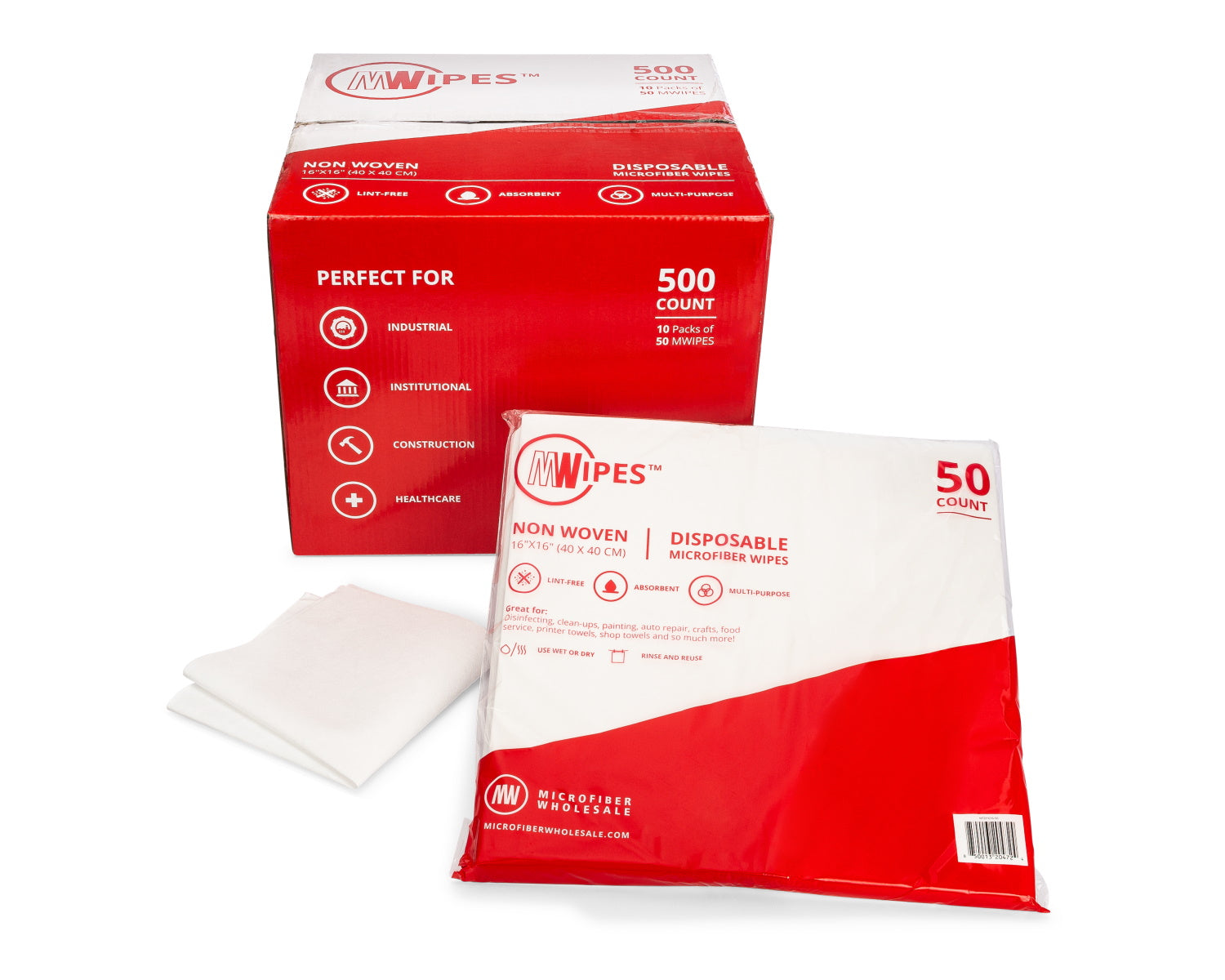The Logic Behind Color Coding
As you probably already guessed, color coding is basically a system of assigning different color microfiber towels and mop heads to specific cleaning tasks and areas, so cleaners can be sure that towels used in high-risk germ-filled areas are never accidentally used in places where food is prepared.
In plain English, this means that we do things like make toilet towels red, so you don't accidentally smear toilet germs on the kitchen counters!
So you might be wondering, why do we need to color code to know not to do that? Can't cleaners just switch microfiber towels regularly and use common sense? Well, we need color coding because of mental load... and insurance!
While technically, cleaners are absolutely able to control cross-contamination in a property without color coding, it requires a significant amount of mental concentration and emotional energy. When cleaners are using only one color of towels, they have to rely solely on their own memory to determine if they are switching supplies frequently enough and remember where previously a specific towel has been used.
It doesn't sound too hard on paper, but when you're exhausted in a rush, mistakes inevitably happen, sometimes with deadly results.
By using color coding, we're building a visual alert system to warn cleaners if they've forgotten to switch towels! Once a cleaner has become used to using specific colors for specific tasks, it becomes a subconscious automatic decision, as human brains are excellent at identifying when colors are "wrong" (so long as the colors are very different shades).
That uncomfortable uncanny valley feeling quickly alerts cleaners to towel-swapping mistakes that normally would take minutes or even hours to detect. This frees up mental load, which cleaners can use to improve their work, as well as just enjoy their day more and feel less stressed.
Color coding isn't just pretty; it's easy to remember, follow, and train, and it sends out a clear message to clients that you're serious about keeping them safe.
If it's so easy and effective, though, it begs the question, why has it taken so long to catch on? Well, color coding isn't catchy because it lacks dopamine!
When developing a new habit, dopamine is the happiness hormone that rewards the brain for doing the work correctly and makes people want to do the task again until the habit is formed. When we do something pleasurable, our brains release dopamine automatically, making enjoyable tasks much easier to remember and do consistently.
That rush of pride and excitement you feel surveying a freshly cleaned floor you just transformed…that’s the dopamine that will motivate you to mop it again later! Mundane tasks with no dopamine reward are notoriously difficult to do in enough frequency long enough to build a subconscious habit.
This is why even Fitness Fanatics struggle to get themselves to drink enough water every day when they don't like the taste, even if they know it's good for them.
So if you want to get yourself or your employees to embrace color coding successfully, you're going to have to gamify the system to build in your own dopamine rewards. Establishing some sort of simple contest with even modest prizes can be all it takes to turn color coding from annoying to exciting!
Throw in a sprinkle of competition by doing things like splitting your staff into teams and allowing them to dock points for one another when they're caught red-handed with the wrong rag. This will inject a massive boost of adrenaline, making color-coding correctly brag-worthy and fun! Most people take an average of 66 days to form a habit, so a two-month contest can easily turn your organization into germ-fighting aficionados.




















 By continuing with your order, you acknowledge and agree to the following:
By continuing with your order, you acknowledge and agree to the following: